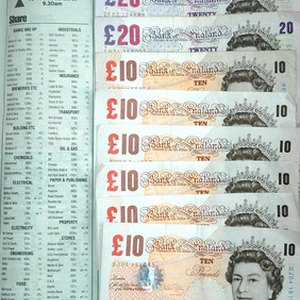
The foreign exchange market is a diverse, over-the-counter world currency market that sees several trillion dollars per day in exchanges made. Since the market deals with so many countries on a daily basis, it is impossible to regulate each and every country, because they are all sovereign nations. As a result, each individual country has its own rules, restrictions, laws and regulations in place depending upon the nation in question.
Import/Export Restrictions
Every country around the world deals with import and export restrictions. They are most commonly seen attached to the entry and exit requirements for individual countries as to how much cash is allowed to be brought in or taken out without regulation. The actual amount depends on which country you happen to be trading in, but for the United States. $10,000 can be brought into the country and removed without any questions asked or restrictions placed upon it. You can contact local embassy offices for relevant countries to determine the restrictions of a given nation.
Fixed Exchange Rates
Fixed exchange rates are one of the most common types of restrictions placed on FX trading around the world. Since each country has its own currency and exchange traditions, it is important to know what the exchange rates are prior to making any transactions. While some countries rely upon fixed exchange rates, others use of floating exchange rates against one currency, while using a fixed rate against another. For example, in Bulgaria the BGN is fixed to the Euro, while against the USD it has a floating exchange rate that varies on a day-to-day basis. These restrictions keep a local currency from devaluing too drastically.
Currency Exchange Restrictions
While free enterprise has slowly gained popularity around the world as more and more countries become developed, certain countries still restrict currency exchange to government-approved traders or organizations. The same is true in the United States, as every trader or broker--regardless if they are an individual or an organization--must first register with the NFA (National Futures Association) and the CFTC (Commodity Futures Trading Commission) prior to actively trading on the market. These groups are tied to the federal government and act as a watchdog to ensure that traders follow the rules and regulations of the United States when it comes to FX trades.
Use of Foreign Currency
The use of foreign currency within a country's borders is generally restricted. For example, the United States only allows U.S. dollars to be used for purchasing items within its borders, while England has its own currency, the pound, and in many countries in Europe it is the Euro. The restriction to local currency only allows the governments of each country to control the value of their currency more directly.
References
- U.S. Commodity Futures Trading Commission: Industry Oversight
- National Futures Association: Regulations
- Federal Trade Commission
- International Monetary Fund
- Board of Governors of the Federal Reserve System. "Foreign Exchange Rates - H.10." Accessed April 30, 2020.
- BIS. “Foreign Exchange Turnover in April 2019.” Accessed April 30, 2020.
- FOREX.com. “Forex Trading.” Accessed April 30, 2020.
- Macrotrends. "Dollar Yuan Exchange Rate - 35 Year Historical Chart." Accessed April 30, 2020.
- European Central Bank. "How Quantitative Easing Works." Accessed April 30, 2020.
- Macrotrends. "Euro Dollar Exchange Rate (EUR USD) - Historical Chart." Accessed April 30, 2020.
- European Union. "Which Countries Use the Euro." Accessed April 30, 2020.
Writer Bio
Tim Anderson has been freelance writing since 2007. His has been published online through GTV Magazine, Home Anatomy, TravBuddy, MMO Hub, Killer Guides and the Delegate2 group. He spent more than 15 years as a third-generation tile and stone contractor before transitioning into freelance writing.

